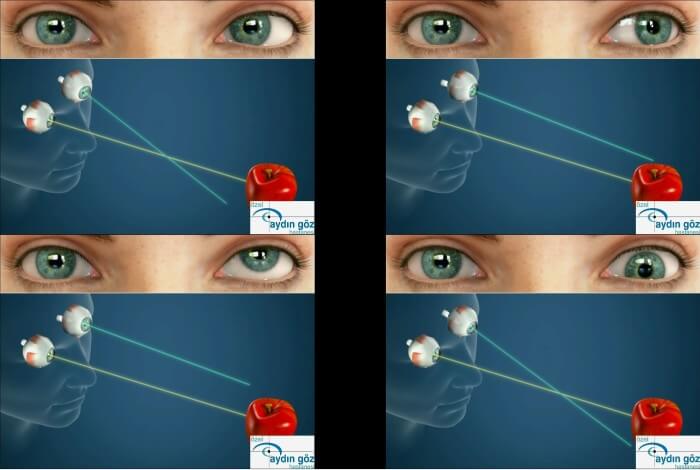Strabismus, also called crossed eyes, is a condition in which the eyes do not properly align with each other when looking at an object. Which eye is focused on the object in question can switch. It may also be present occasionally or constantly. If present during a large part of childhood amblyopia may result and depth perceptionmay be lost. Adults may have double vision.
Strabismus can occur due to muscle dysfunction, farsightedness, problems in the brain, trauma, or infections. Risk factors include premature birth, cerebral palsy, and a family history of the condition. Types include esotropia where the eyes are crossed, exotropia where the eyes diverge, and hypertropia where they are vertically misaligned. They can also be classified by whether the problem is present in all directions a person looks (comitant) or varies by direction (incomitant). Diagnosis may be by looking at the light reflecting from the eyes and finding it is not centered on the pupil. Another condition that produces similar symptoms is a cranial nerve palsy.
Treatment depends on the type of strabismus and the underlying ca
use. This may include the use of glasses and possibly surgery. Some types benefit from early surgery. Strabismus occurs in about 2% of children. The term is from the Greek strabismós meaning “to squint”. Other terms for the condition include “squint”, “wall-eye”, and “cast of the eye”.
